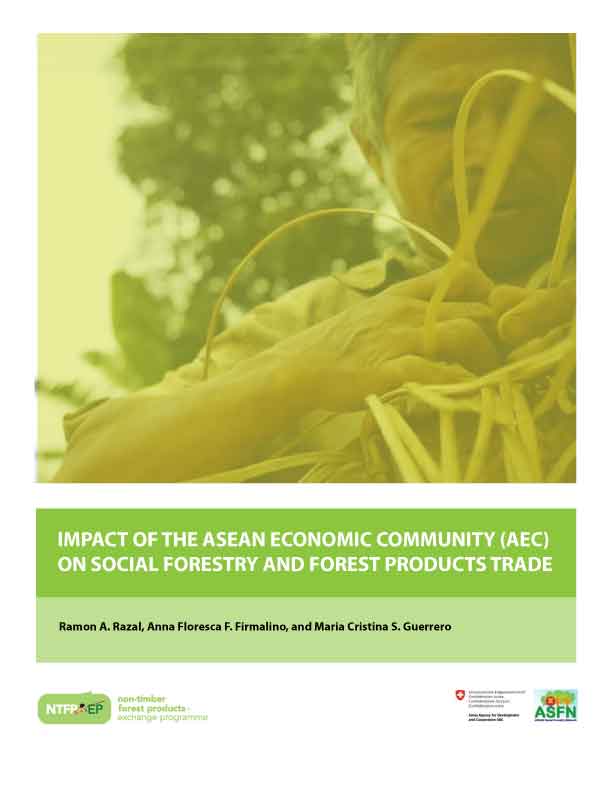Ramon A. Razal, Anna Floresca F. Firmalino, and Maria Cristina S. Guerrero
The study reviews the impacts (both positive and negative) of the Association of Southeast Asian Nations (ASEAN) Community as well as the opportunities that may lend themselves to the integration of social forestry stakeholders into the mainstream of the ASEAN regional economy. It was funded through the Non-Timber Forest Products Exchange Programme (NTFP-EP) with support from the ASEAN Swiss Partnership for Social Forestry and Climate Change (ASFCC). It forms part of the second phase of ASFCC’s three-year project that commenced in 2014, when the full integration of ASEAN into one community looms large on the horizon as a significant factor that will bear on regional developments in social forestry.
By 31 December 2015, it is envisioned that the ASEAN region will become one ASEAN Community that is founded on strong economic, political, and socio-cultural partnerships among the ASEAN member states (AMSs) comprising Brunei Darussalam, the Kingdom of Cambodia, the Republic of Indonesia, the Lao People’s Democratic Republic (hereinafter referred to as “Lao PDR”), the Federation of Malaysia, the Union of Myanmar, the Republic of the Philippines, the Republic of Singapore, the Kingdom of Thailand, and the Socialist Republic of Viet Nam. The ASEAN Economic Community (AEC), as one of its pillars alongside the Political-Security Community (APSC) and the Socio-Cultural Community (ASCC), seeks to transform the region into a single market and production base, a highly competitive economic region, a region of equitable economic development, and a region fully integrated into the global economy. The economic aspects of integration will entail liberalization of trade among the AMSs including measures that will eliminate all tariffs and non-tariff barriers, enhance interconnectivity, and such other measures that will allow free flow of goods, services, investment, capital and skilled labor.




